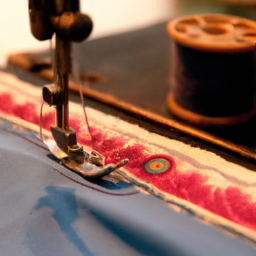
History of Sewing Thread
Thread, a thin and flexible strand of yarn or filament used for stitching, binding, and weaving, has been an essential component of sewing for centuries. From its early origins to the modern processes of manufacturing, sewing thread continues to play a vital role in crafting textiles.
Ancient Origins
The history of sewing thread dates back to ancient times. In ancient Egypt and Mesopotamia, people used plant fibers, such as flax and cotton, to create spun threads. These threads were then hand-stitched into garments and other fabric items.

Ancient Egyptian Thread
The popularity of sewing and the need for stronger threads grew during the Middle Ages in Europe. As a result, silk threads emerged as a luxury thread option. Silk was highly valued for its strength, smooth texture, and shine. It became a desirable choice for decorative stitching and garment embellishment.
Industrial Revolution
The Industrial Revolution in the 18th and 19th centuries brought significant advancements in thread production. Machines, such as the spinning jenny and the water frame, were invented, enabling the mass production of cotton thread. With the advent of these technologies, sewing thread became more affordable and widely accessible to the general population.

Spinning Jenny Machine
During this period, manufacturers started experimenting with thread materials, and cotton became the most commonly used material due to its availability and versatility. Thread production continued to evolve, with the introduction of synthetic fibers like nylon and polyester in the 20th century.
Modern Thread Production
Today, modern sewing threads are manufactured using a range of materials, including cotton, polyester, rayon, and silk. These threads differ in strength, elasticity, and appearance, making them suitable for various sewing techniques and applications.

Modern Thread Production
Thread manufacturers employ advanced techniques to ensure consistent quality and durability. Specialized threads with enhanced properties, like water-resistant or flame-retardant threads, have also been developed to meet specific industry requirements.
“Sewing thread has come a long way from its humble origins, revolutionizing the textile industry and enabling diverse forms of artistic expression through stitching.”
Conclusion
Throughout history, sewing thread has played a crucial role in clothing construction, artistic endeavors, and the development of the textile industry. From natural fibers to synthetic materials and mass production techniques, thread manufacturing has continually evolved to meet the needs of various sewing applications. Today, a wide range of threads are available, providing artisans and makers with endless possibilities in their creative pursuits.
Sewing threads have transformed over time, adapting to the needs of the textile industry.




